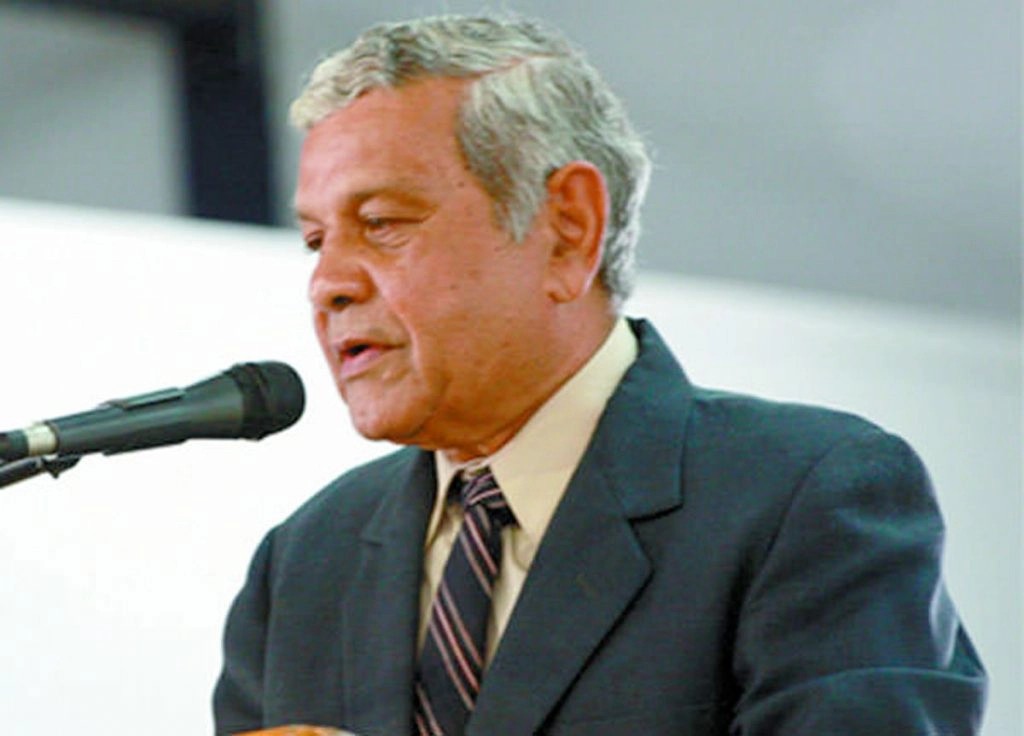Brinsley Samaroo, Professor Emeritus at U.W.I was a scholar through and through bearing a short stint in politics. Most interestingly was that after that political stint, he readily returned to where his heart was – research, writing, teaching, and guiding individuals like me in our efforts to highlight aspects of our history that needed to be documented and presented to the public. In 2006 I announced to him that I was researching the life and times of Doon Pandit and he informed me that he had pamphlets of the Hindu Maha Sabha and its efforts to initiate education. These pamphlets were passed on to me and provided much information on the early effort of Doon Pandit, Ranjit Kumar, Bhola Pandit, and other prominent Hindu families of Arima and Environ to develop the Gandhi Ashram School on the compound of the Arima temple.
Professor Samaroo also guided me while writing the manuscript and I recalled him suggesting to me that the many persons being referenced should be on the footnotes. In this way, I was able to keep those individuals within the narrative while not taking away from the subject.
When the book was launched at the Arima Mandir, Prof. Samaroo was present. Dr. Jerome Teelucksingh, a protégé of Dr. Samaroo, was given the distinct honor to review the book with Sat Maharaj doing the launching. It was a grand occasion as many distinguished individuals who knew Doon Pandit were only too happy to be present to welcome the publication. The Doon Pandit family were happy that the life and times of their patriarch were now indelibly scribed in the annals of our history.
In addition to academic conferences on the Indian diaspora, Prof. Samaroo was also active in what I would call public education. I remember him being invited to speak at Mon Repos in San Fernando on the Muharram Massacre of 1884 one Sunday afternoon.
Another major research Professor Samaroo supervised was a doctoral thesis on Hindi Cinema by Primnath Gooptar, a retired principal and school supervisor. This was a much-publicized research paper as Primnath Gooptar was given the opportunity to present his thesis in videos. This was a much looked forward to research as Hindi cinema had undoubtedly shaped the social, cultural, and religious values of the Indo community. One individual who identified passionately with this program was the late Ashram Maharaj who was a former student of Professor Samaroo. Knowing Ashram to be a smoker, Brinsley would slap his pocket and say ‘Boy, like I leave my cigarettes home, you have one to spare me’ and Ashram was only too happy to have a companion to share in his vice.
With Professor Samaroo’s accessibility, I felt empowered to research and write, fully aware that he would make time to guide me. When I completed the book on Abracadabra -Stage Entertainer and Magician Professor Samaroo accepted to do the review and Dr Deokinanan Sharma, President of the NCIC, to do the launch. It was quite a successful launch with Deoraj Seunarine, the subject of the book, entertaining the audience. Professor Samaroo looked beyond the magic and the light episodes in the text to highlight the important historical events and personalities that Deoraj Seunarine directly encountered during his growing-up years in Debe and Port of Spain.
Dr. Primnath Gooptar did not stop at getting his doctorate but went on to co-author a biography on the life of Ranjit Kumar, one of the more distinguished political and cultural figures of the pre-Independence era, with Professor Brereton. It was more like a ‘fairy tale’ that Ranjit Kumar built the Wrightson Road with mangrove at the base. Dr Gooptar confirmed this construction feat and went on to highlight Kumar’s background in India, his studies in the UK, and his arrival with the movie Bala Jobhan and the dark forces he had to fight to have the movie screened. Gooptar continued his research and writing under his guidance and today he has several publications to his credit including Cultural Persistence-50 Years of the National Council of Indian Culture, 1964- 2014 (2015) and the Ramleela of Sangre Grande (2015).
Had Prof Samaroo not been so involved with the NCIC, its activities might have been restricted to Divali Nagar – building mud huts, cooking in chulah, and blowing on pukhnee. With Professor Samaroo’s presence, the NCIC grew a brain that manifested in the Heritage Center and Hall of Pioneers that now honors sons and daughters of Indenture for their outstanding contribution to the diaspora. Book launches are now an integral part of the NCIC calendar of activities.
In conclusion, Professor Samaroo did not only build himself but several others to continue his legacy of researching and writing the historical narrative of the diaspora. He was never self-centered and for this, I salute him. Unlike many leaders who surround themselves with dead weights – chamchas and pakar lals, Professor Samaroo worked to empower people and for this, his legacy would live on.
